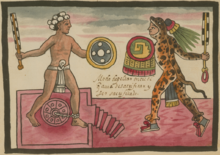
Roger Williams was an English-born New England Puritan minister, theologian, and author who founded Providence Plantations, which became the Colony of Rhode Island and Providence Plantations and later the State of Rhode Island. He was a staunch advocate for religious freedom, separation of church and state, and fair dealings with the Native Americans.

The National Library of Wales, in Aberystwyth, is the national legal deposit library of Wales and is one of the Welsh Government sponsored bodies. It is the biggest library in Wales, holding over 6.5 million books and periodicals, and the largest collections of archives, portraits, maps, and photographic images in Wales. The Library is also home to the national collection of Welsh manuscripts, the National Screen and Sound Archive of Wales, and the most comprehensive collection of paintings and topographical prints in Wales. As the primary research library and archive in Wales and one of the largest research libraries in the United Kingdom, the National Library is a member of Research Libraries UK (RLUK) and the Consortium of European Research Libraries (CERL).
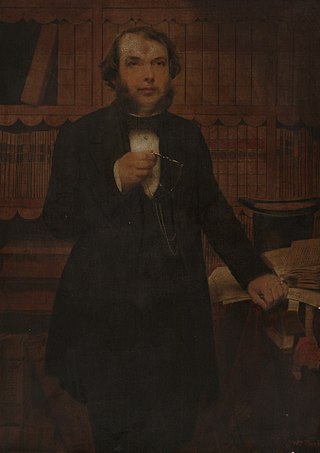
Henry Stevens was an American bibliographer.
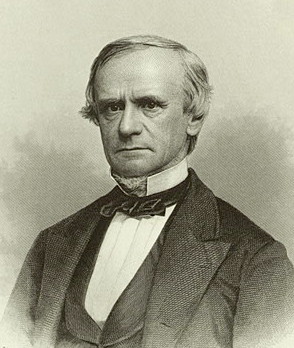
John Russell Bartlett was an American historian and linguist.

George Parker Winship was an American librarian, author, teacher, and bibliographer born in Bridgewater, Massachusetts. He graduated from Harvard in 1893.

John Carter Brown II was a book collector whose library formed the basis of the John Carter Brown Library at Brown University.

The Rhode Island Historical Society is a privately endowed membership organization, founded in 1822, dedicated to collecting, preserving, and sharing the history of Rhode Island. Its offices are located in Providence, Rhode Island.

The John Hay Library is the second oldest library on the campus of Brown University in Providence, Rhode Island, United States. It is located on Prospect Street opposite the Van Wickle Gates. After its construction in 1910, the Hay Library became the main library building on campus, replacing the building now known as Robinson Hall. Today, the John Hay Library is one of five individual libraries that make up the University Library. The Hay houses the University Library's rare books and manuscripts, the University Archives, and the Library's special collections.

The Providence Athenaeum is an independent, member-supported subscription library in the College Hill neighborhood of Providence, Rhode Island. The building is open to the public, but only members can check out items from the collection.

The Nightingale–Brown House is a historic house at 357 Benefit Street on College Hill in Providence, Rhode Island. It is home to the John Nicholas Brown Center for Public Humanities and Cultural Heritage at Brown University. The house is architecturally significant as one of the largest surviving wood-frame houses of the 18th century, and is historically significant as the longtime seat of the Brown family, whose members have been leaders of the Providence civic, social, and business community since the 17th century, and include nationally significant leaders of America's industrialization in the 19th century. The house was listed on the National Register of Historic Places and declared a National Historic Landmark in 1989.

Lawrence Counselman Wroth was an American historian and the author of The Colonial Printer, the definitive book on the American printing trade during the period of 1639 through 1800. Though he wrote hundreds of articles or books, Wroth was also a librarian and research professor.
James Franklin was an early American printer, publisher and author of newspapers and almanacs in the American colonies. Franklin published the New England Courant, one of the oldest and the first truly independent American newspapers, and the short lived Rhode Island Gazette.
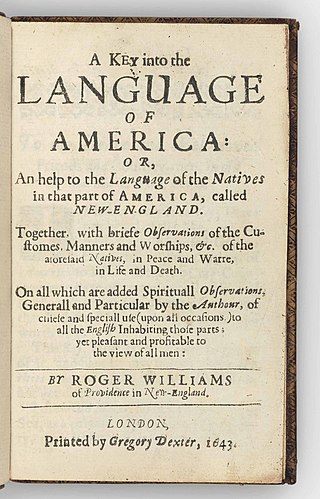
A Key into the Language of America or An help to the Language of the Natives in that part of America called New England is a book written by Roger Williams in 1643 describing the Native American languages in New England in the 17th century, largely Narragansett, an Algonquian language. The book is the first published colonial study of a Native American language in English.
Thomas Randolph Adams was librarian of the John Carter Brown Library and John Hay Professor of Bibliography and University Bibliographer at Brown University.
Gregory Dexter was a renowned printer of important and controversial books and pamphlets in London. In New England, he assumed various roles including serving as a consultant to printers, a Baptist minister, an owner of a limestone quarry, and a political figure elected as president of the combined towns of Providence and Warwick in colonial Rhode Island. He is best known as the printer of Roger Williams's book A Key into the Language of America in 1643, the first English translation of a Native American language.

Frederick Richmond Goff was an American rare book librarian and specialist in incunabula.
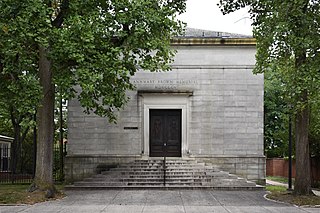
Annmary Brown Memorial is an art museum, library and mausoleum at Brown University. It is located at 21 Brown Street in Providence, Rhode Island. It is one of six libraries comprising the University Library system.

Finn Michael Westby Caspersen Sr. was an American financier and philanthropist. A graduate of the Peddie School, Brown University and Harvard Law School, he was chairman and chief executive of Beneficial Corporation, one of the largest consumer finance companies in the United States. After an $8.6 billion acquisition of Beneficial by Household International in 1998, Caspersen ran Knickerbocker Management, a private financial firm overseeing the assets of trusts and foundations.
Margaret Bingham Stillwell was an American librarian and bibliographer who spent most of her professional career as curator of the Annmary Brown Memorial.

John Carter was an early American printer, newspaper publisher, and postmaster of Providence, Rhode Island. Carter entered the printing profession as an apprentice of Benjamin Franklin while living in Philadelphia. After he entered into a partnership and ran The Providence Gazette, which he eventually purchased and ran on his own up until the year of his death.


